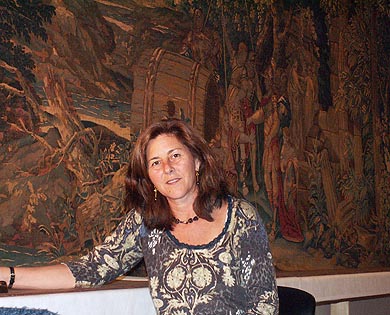p.MsoNormal, li.MsoNormal, div.MsoNormal { margin: 0in 0in 0.0001pt; font-size: 12pt; font-family: “Times New Roman”; }div.Section1 { page: Section1; }ol { margin-bottom: 0in; }ul { margin-bottom: 0in; }
ECPN MEETING MINUTES
October 21, 2010
Conference Call Attendees:
Ryan Winfield
Karen Pavelka
Carrie Roberts
Amy Brost
Heather Brown
Rose Daly
I. AIC Meeting (Karen)
a. AIC annual meeting location was moved to Philadelphia due to bankruptcy of previous venue. Group consensus was that the transition was handled very well, with clear communication throughout. Philadelphia will be an ideal location for students in the NYU and Delaware programs to attend, and the mid-Atlantic region is central for many AIC members, so it was good to be able to keep the 2011 meeting in the northeast.
II. Communications Update (Amy)
a. Conversation with Rachael Perkins Arenstein regarding AIC Publications. Rachael emphasized that ECPN members should feel free to send content for the AIC website, blog, etc. Students and emerging conservators are encouraged to send their research projects and theses to JAIC. For those wishing to submit content for the Wikis, each specialty group has its own approach and submission guidelines, and needs to be approached separately.
b. Conversation with Michele Derrick regarding JAIC Peer Reviewers. There were responses to the invitation and there is currently a robust list of prospective reviewers. They will be called upon depending on the nature of the submissions. There are two reviewers per paper, and although they remain anonymous, participants can certainly add “JAIC Peer Reviewer” to their resume under ‘professional affiliations’ or ‘service work.’
c. Four proposed ECPN logo designs and a flier design were submitted for discussion. The proposed flier has a tear-off ‘wallet card’ to make it easier to keep key information about ECPN, the blog, additional contact information, etc. Further discussion is needed regarding the appropriateness of having a separate logo for ECPN. Perhaps use ECPN logo in conjunction with the AIC logo. Flier will be used for ANAGPIC and perhaps other upcoming conferences.
III. Student Research Database (Carrie)
a. Carrie, Amber Kerr-Allison, and Sagita Sunara discussed the idea and would like to move ahead with a plan to create an online database of student research in conservation. Catalyst was the IIC in Istanbul and also the first annual Engaging in the Preservation of Cultural Heritage (EPOCH) student symposium (Austin, TX). At both conferences, students felt that they were largely unaware of the research projects underway in other parts of the world. EPOCH has many abstracts already. Standards would need to be developed (i.e., require a significant research component). A link could be created off the AIC webpage. Rose will organize a conference call with Lori, Carrie, Amber, and Sagita to determine next steps.
IV. Outreach Update (Heather)
a. Poster abstract for AIC 2011 meeting was submitted, though no feedback yet. ECPN members could take shifts spending time at the poster to talk to meeting attendees about the organization. Heather will take a flier to a meeting of emerging museum professionals the week of Oct. 25. Rose will make Heather an Admin on the Facebook page so she can remove spam. Julie Benner of the Glasgow Conservation Center has agreed to write a post for the ECPN blog.
V. Mentor Program (Ryan)
a. Most of the mentee applicants have been paired up with mentors.
b. The process for pairing mentors with mentees is as follows: Process mentee applications and search for appropriate match. Team of three people are reviewing prospective matches. Email mentor with proposed mentee information for approval. If the mentor agrees, s/he then contacts the mentee. Mentee approves of the match.
c. Need to fine-tune the application process to regulate the flow of applications. Perhaps create four submission “cycles” with deadlines. Promote the program for each cycle to AIC members.
d. Get back to people waiting for mentors to let them know when they can expect a response.
e. Karen agreed to reach out to prospective mentors. Heather/Rose will follow up on the specific needs of the mentees.
VI. International Student Conference (Carrie, for Amber)
a. Idea that there should be an international version of ANAGPIC, an association of international conservation training programs. Need to find out how receptive the organizations would be. Students are not fully aware of all training programs. An international student conference could be organized, perhaps an online conference. Concerns about the overlap with other conferences, costs of travel, technology costs. Need to study the feasibility of the idea and how it might be executed.
VII. “Become a Conservator” Web Page (Ryan)
a. Reviewed by ECPN per Ryan’s request. Group consensus that there could be more links, more graduate program information, and more on training. Break up the text by inserting more photos, personal touches like people profiles.
Next conference call 1 PM EST, Thursday, November 18, 2010.
Respectfully submitted,
Amy Brost





